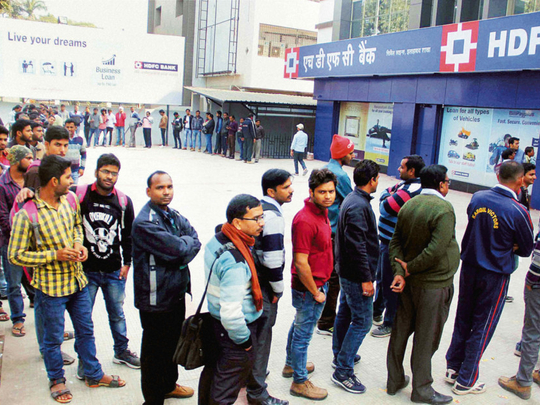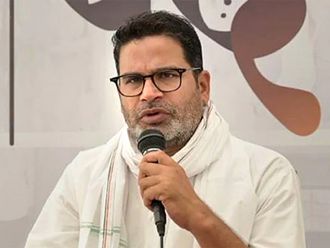
It will take time for the economists to figure out whether the fall in the India’s growth rate to 5.7 per cent is the result of the disruption caused by demonetisation and the Goods and Services Tax (GST), but most of the common people will see a connection between the two steps and a slowing down of the economy.
For most of them, the GST seems right — like the uniform civil code in another field of national life, notwithstanding the teething troubles. But the jury is out on whether demonetisation was necessary if only because 99 per cent of the banned currency has been returned to the government.
Even if this means that those with unearned incomes have chosen to deposit their money in the bank, the question will remain whether the huge disruption caused by demonetisation was required to ferret out these holders of black money, especially when their numbers cannot be too large since most of the dubious earnings is not kept in cash, but invested in gold, jewellery and real estate.
The claim that counterfeit currency will be detected by demonetisation has also been disproved by the fact that the amount of such notes that has been turned in is a mere 0.0007 per cent of the total.
If the government’s intention in wiping out 86 per cent of the currency in circulation in one fell swoop was the result of the failure to keep Narendra Modi’s election-eve promise of depositing Rs1.5 million (Dh862,499) in each bank account by unearthing black money, it can only be described as a “monumental misjudgement”, as former prime minister Manmohan Singh called demonetisation.
It is not surprising, therefore, that the government has changed its line from the initial justification of demonetisation as a means of breaking the back of the so-called parallel economy to that of converting the country into a cashless, digital economy.
However, even if this second objective is laudable, the unanswered question remains whether the shock and awe of demonetisation were necessary considering that more than 100 people died while standing in queues before banks and how an unknown number of small businesses suffered. According to one estimate, five million jobs were lost.
The fact that the people in general and the banking system have got back to their feet is a tribute more to their resilience than to the government’s wisdom. But what is undeniable is that they have been put through a wringer, as it were, when the ultimate gain in terms of cleansing the system has been negligible.
It is obvious that the same ends of trapping the hoarders of black money and nudging India towards the greater use of plastic cards could have been achieved by far more carefully devised ways by experts, which would not have caused the kind of turmoil set off by the sudden sweeping of the economy by the broom of demonetisation.
The utility of this reckless intervention is all the more doubtful since India’s ruling Bharatiya Janata Party’s (BJP) claim that demonetisation paid it political dividends is not foolproof.
For instance, the party’s record in winning elections in 2017 is 3-2, considering that it lost in Punjab and came second in Goa and Manipur while winning in Uttar Pradesh and Uttarakhand.
It is another matter that the BJP negated the outcomes in Goa and Manipur by some adroit manoeuvres in horse-trading in order to secure the allegiance of MLAs susceptible to enticements. But the original score line showed that demonetisation was not a booster for the BJP.
It is also unclear to what extent the dramatic step of November 8 last year has been a damper for terrorism and Maoist violence since Kashmir remains on the boil, while the decline in the incidents of Maoist outrages from 155 in 2014 to 118 in 2015 to 69 in 2016 can be ascribed to a natural process caused by the gearing up of the official machinery and the realisation among the insurgents about the futility of their cause. Demonetisation, therefore, can hardly be advanced as a reason.
The worry for the government at present will be about the fall in the growth rate as it will rob India of its claim of being the fastest-growing economy and accentuate the phenomenon of jobless growth.
It is the failure to rev up the employment scene, which is making the government turn to the customary measures of wooing vote banks by expanding the ambit of the creamy layer for the backward castes and firming up the BJP’s electoral tactic of enticing the non-Yadav backward castes to its side through a sub-categorisation of these groups. But in the ultimate analysis, only a buoyant economy can help the ruling party’s political fortunes.
If demonetisation has put paid to such hopes for the near future — although the new Niti Aayog vice-chairman, Rajiv Kumar, has called a link between the falling growth rate and demonetisation “spurious” — the government will have only itself to blame.
— IANS
Amulya Ganguli is a political analyst










